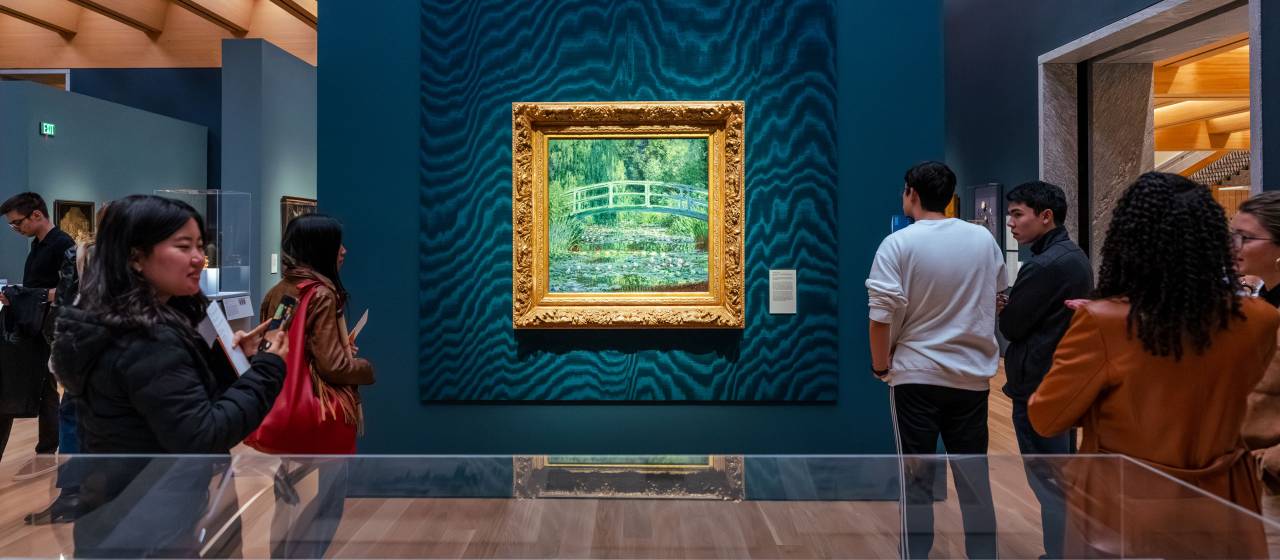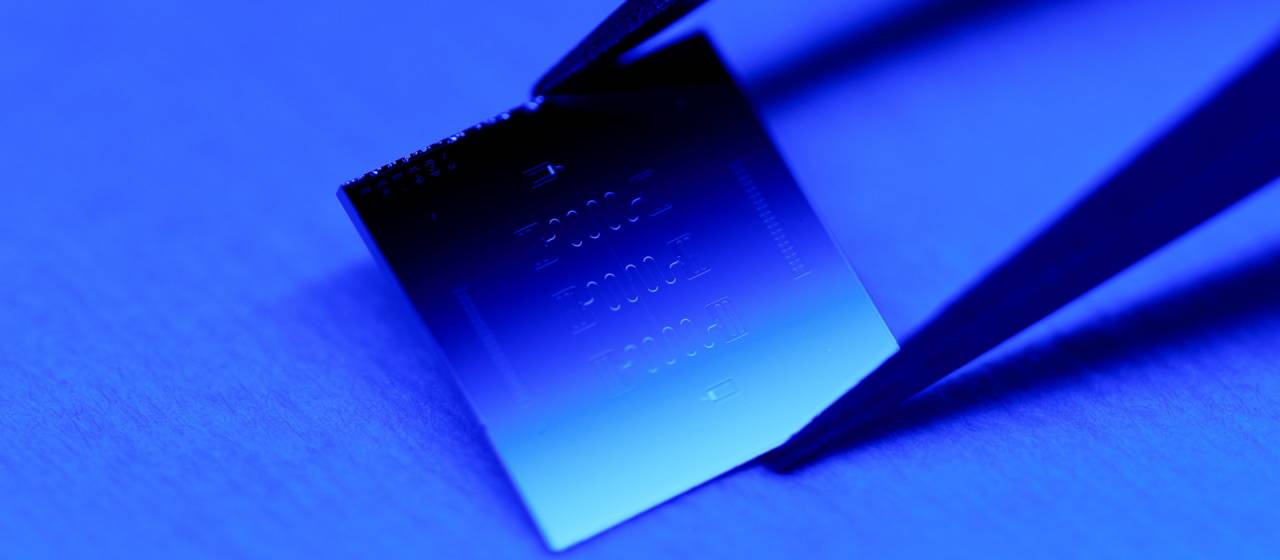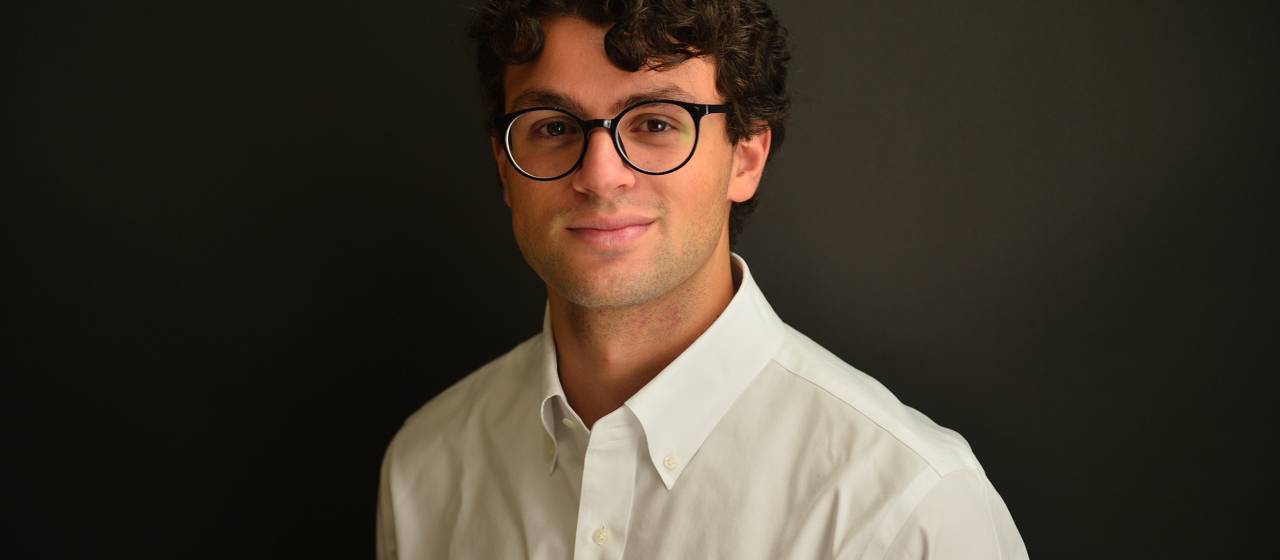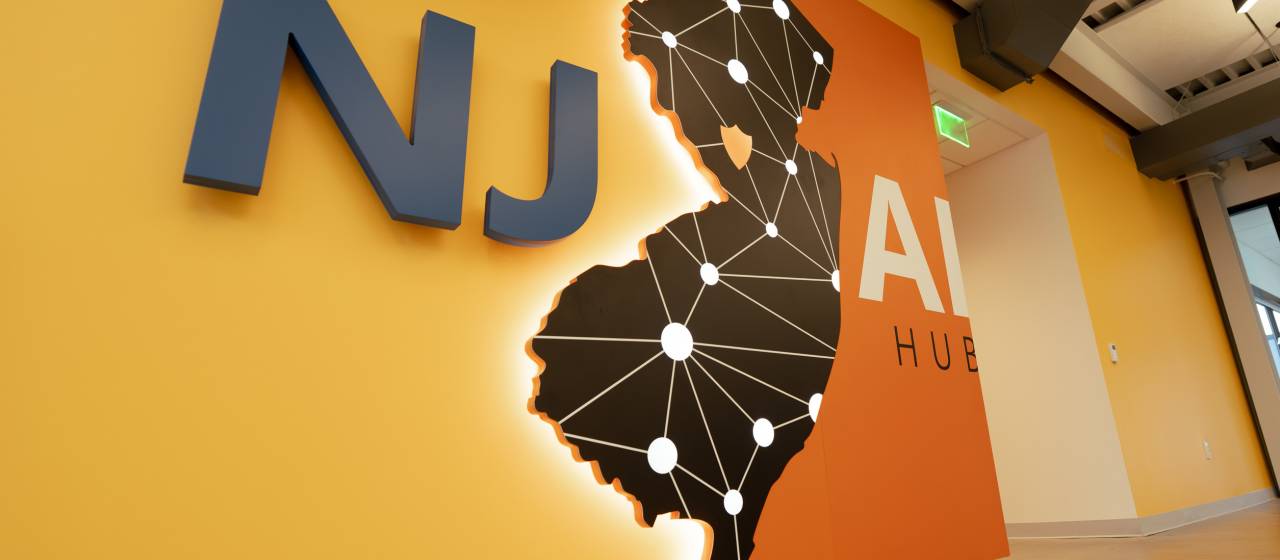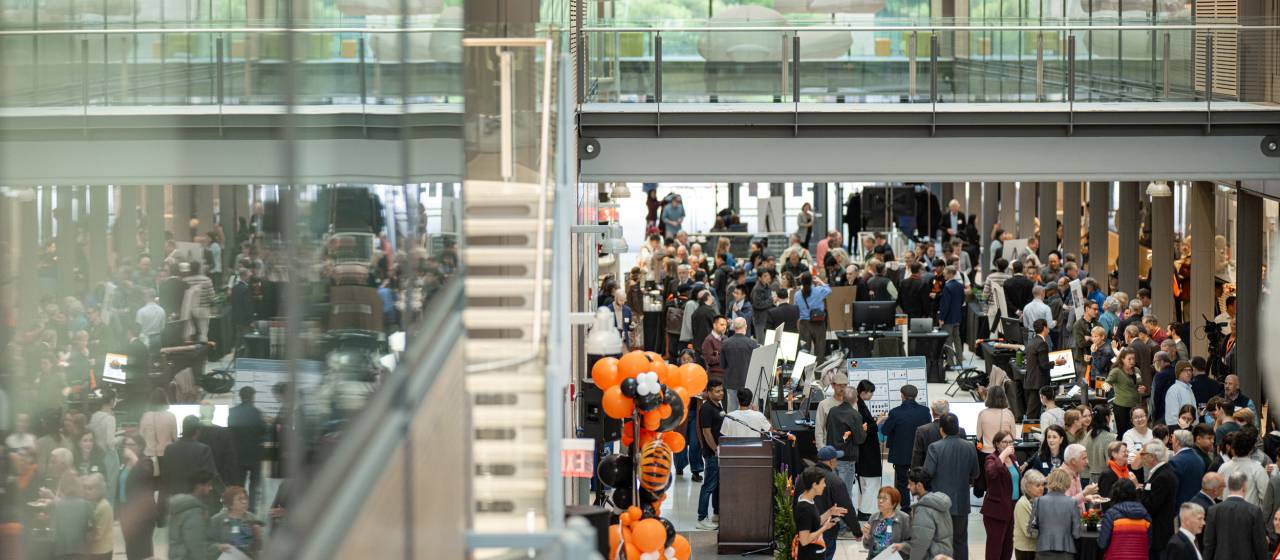'Truly inspiring': New Princeton University Art Museum opens its doors to all
At 4:59 p.m. on Friday, Oct. 31, the line of people waiting to enter the new Princeton University Art Museum for its 24-hour open house snaked out of sight along the front of the building, far past the gates of Prospect House.
At 5 p.m. on the dot, James Steward, director of the museum, addressed the crowd with his arms open wide. “I’ve waited five years for this moment. I think I’m going to get a little emotional. Welcome, everyone!” Then he pulled open the door. Within minutes the museum became a living, breathing thing, animated by excited voices and the buzzing thrum of people filling its halls, stairs and galleries in every direction.
Twenty-four hours later, 21,763 people had walked through the doors.
The museum — and the 24 hours of dancing, stargazing, artmaking, live performances, film screenings and more — drew plaudits from delighted visitors.

Left: University and community members line up outside the museum before the opening on Oct. 31. By the end of the 24-hour event, 21,763 people had walked through the doors. Right: James Steward, director of the museum, introduces the live storytelling event "The Art of the Moth," presented by McCarter Theatre Center.
Ron Davidson, a Princeton resident, pronounced the open house “a once-in-a-lifetime celebration.”
Staff member Natalia Ermolaev, executive director of the Center for Digital Humanities, called the open house “truly inspiring.” She said her two young children “were captivated at every turn, from Nick Cave's vibrant mosaic at the entrance to the thousand-year-old Roman mosaics glowing beneath our feet. We're already looking forward to returning.”
Wendy Heller, the Scheide Professor of Music History and professor of music, said she was happy to see her favorite works from the old museum “after so many years, with new neighbors and with room to breathe.”
“The open house was a sublime experience,” said senior Ashley George, an English major and European cultural studies minor. George already has plans to return to newly discovered study spaces at the museum with friends this week.
A week before the 24-hour open house, 3,500 undergraduate and graduate students attended a special student preview. Two previews followed for faculty, staff and the tradespeople who worked on the museum — with an additional 2,100 attending. The museum attracted another 3,256 visitors on Sunday, its first day of regular operations.

About 2,100 University faculty, staff and tradespeople who worked on the new building attended two special previews in the week leading up to the official public opening.
Discovery, awe and wonder around the clock
Even in the wee hours of the open house, the museum whirred with activity. Just past midnight, a wave of nearly 1,000 students and community members flooded in. At the 1:30 a.m. trivia contest, the Grand Hall was packed with 42 teams who barked out answers to questions about the museum’s collections, including “What is the name of the French artist who is known for his depictions of ballet dancers, such as the dancer featured here?" (Answer: Edgar Degas.)
Less than eight hours later, at 9 a.m. Saturday, the soaring, three-story Grand Hall was again filled to capacity. This time participants sat in near-total silence, eyes closed, for a live music meditation as the Richardson Chamber Players performed Schoenberg’s “Verklärte Nacht (Transfigured Night), Op. 4.”
At 10 a.m. a different iteration of silence prevailed outside on the north terrace during a packed tai chi workshop, accompanied only by the sound of autumn leaves somersaulting along the terrace. Meanwhile, in the creativity labs, happy chatter filled the air, with children elbow-deep in artmaking.
And so it went throughout the day as sounds of discovery, awe and wonder filled the new building, from whispers in the galleries to the musical exclamation points of the Westrick Boys and Girls Choir in the Tuttle Lecture Hall and a Broadway cabaret presented by McCarter Theatre Center in the Grand Hall.

Throughout the 24 hours, visitors created their own paths through the new galleries and pavilions. James Steward, director of the museum, said the museum's design encourages visitors to “wander at will until you see something that captures you and then stop."
A “labor of love” for the community
Throughout the 24 hours, visitors created their own paths through the new galleries and pavilions. That’s exactly what Steward said he hoped would happen.
The museum design, essentially a donut shape connecting nine interlocking pavilions, intentionally avoids a “prescribed path,” he said.
The idea is for visitors to “wander at will until you see something that captures you and then stop,” Steward said.
“I believe profoundly in the ability of good architecture to pull us out of ourselves and our workaday preoccupations, including inviting us to slow down, arresting us in our tracks, and making possible the moments of pure transport that engaging with a great work of art can then afford,” he said. “I’ve been lucky enough to feel that many times in my life, and it’s been a labor of love to want to make that possible here on our own campus, in our own community.”
The new museum is also, by design, a place to foster curiosity. It’s important, he said, to “trust your audience to be curious.”

The new museum's second-floor Orientation Gallery welcomes visitors with some striking juxtapositions of artwork from different times and places.
When modern meets Victorian and medieval
On one wall of the second-floor Orientation Gallery, John Singer Sargent’s 1887 oil portrait of Elizabeth Allen Marquand hangs beside contemporary artist Mario Moore’s oil portrait of Princeton University Art Museum security guard Michael Moore (no relation), painted in 2019.
In another corner of the Orientation Gallery, Andy Warhol’s 1962 painting of Marilyn Monroe, “Blue Marilyn,” hangs beside a series of late medieval and early Renaissance stained glass windows.
These striking juxtapositions welcome visitors to the art-filled pavilions and galleries on the museum’s main exhibition floor — including modern and contemporary, European, Asian, African, ancient Mediterranean, and American. The museum’s collections are organized largely by eras and regions of the world, but visitors occasionally encounter outliers from different times and places displayed side by side.
“We live in this incredibly visually saturated world,” Steward said. “So we asked ourselves, as curators, how do we do this work in such a way that actually causes someone to stop for a moment and ponder?”
The artworks that are “in dialogue,” he said, are designed to “provoke people out of their comfort zones a little bit, but gently.” For example, “Someone who is drawn to a more traditional or historical object is lured into the contemporary in a way that causes them to say, ‘Okay, I’ve got to give this a chance,’ as opposed to ‘Oh, that's just not for me.’ And the other way around,” he said.
What makes this approach possible, Steward said, is the sheer size of the museum’s collections, which began at the University even before the American Revolution. “We can try to grapple with the whole of the world under one roof. That is not something that the average university museum can do.”

The design of the new museum encourages close looking, including providing seats in front of some of the displays. Pictured: Clara Church of Brooklyn sits in front of a case of Inka figures from the 15th and 16th century.
The transformative experience of close looking “just for 10 minutes”
All of the museum’s design choices — from having most of the art displayed without protective glass to cases with drawers that visitors can open to view more art — invite the experience of close looking.
Even if it’s just for 10 minutes.
“I hope every visitor might find one object in the galleries that’s outside their immediate experience or familiarity and spend 10 minutes with it, standing or sitting, looking actively and imagining what it was like for the maker to make it, the conditions that compelled them to do so, how they made the choices they did (knowing that each element was the result of a choice),” Steward said, “and in doing so, to leave their own present reality behind just for those 10 minutes.”
The drawers offer a novel visitor experience, more common to natural history museums than art museums. “If you see a drawer, open it — they hold Rembrandt etchings, Japanese block prints, 19th-century photographs, contemporary innovations, intimate encounters that reward close study,” said Juliana Ochs Dweck, chief curator. The only drawers off-limits? Those in a few pieces of historic furniture on display.

“I hope every visitor might find one object in the galleries that’s outside their immediate experience or familiarity and spend 10 minutes with it, standing or sitting, looking actively and imagining what it was like for the maker to make it” Steward said, “and in doing so, to leave their own present reality behind just for those 10 minutes.”
A new world for students and coursework
At their preview, students packed into the Grand Hall for performances by student-led ensembles including eXpressions, Princeton University Ballet, the Tigressions and Quipfire!, a silent disco and an outdoor performance by Grammy Award-winning DJ Jazzy Jeff.
But throughout the four-hour event, the real star of the show was the art. In every gallery space and pavilion, students marveled at the artwork — and the simple fact that the museum, which they had previously encountered as a construction site, was now a real and very beautiful place. “They were looking, they were reading the labels, and most of all, they were lingering,” Steward said.
“I'm excited about everything!” said Faith Ho, a sociology major and visual arts minor. “I definitely plan to spend time at the museum as a source of inspiration and also as a kind of rest from work. I also envision it as a great place to hang out with friends, whether to explore an exhibit together or try an event.”

Left: The Grand Hall is designed as a social gathering space and can be turned into a theater for performances and talks. At right: Members of Princeton University Ballet perform during the student preview.
Eliana Gagnon, a 2023 undergraduate alumna and a second-year graduate student in sociology, stood agape with three friends in front of Claude Monet’s “Water Lilies and Japanese Bridge,” which hangs on its own wall against a dramatic fabric backdrop in the European pavilion. The University owns one from a series of 12 Monet paintings of that scene.
“I was stunned that our University museum possessed this piece, and I was shocked when I realized that there were more Monet paintings behind me,” she said.
Gagnon, who earned a minor in visual arts as an undergraduate, visited the old museum just once before it closed because of the pandemic in March of her freshman year. Being in the new museum stirred the artist inside her, she said. “I felt my passion for drawing reigniting as I sketched the artwork with paper and pencil provided by the museum’s front desk.”
Steward said that from the very beginning he wanted the new museum to be a significant experience for every student, across disciplines. “Someone who loves music might come to a student concert in the Grand Hall,” he said.
With six object study rooms, which can be used from 8 a.m. to 10:45 p.m., Steward hopes classes from every academic discipline will feel encouraged to experience objects from the collection for close looking, analysis and discussion.
“A professor in environmental studies might not bring their students in to study objects aesthetically but they might interrogate them in terms of what the object says about species loss or material history,” he said. Upcoming new faculty workshops will encourage those possibilities.
Wendy Heller in the music department once taught a Freshman Seminar, “Listening at the Museum,” with roughly half of the class sessions at the old museum. “We considered the relationship between artworks and music, exploring the sonic world that was implicit in the artworks and the visual images suggested by the music. I am looking forward to the opportunity of offering that course again,” she said.
Ben Zhang, a 2022 graduate alumnus and lecturer in the Lewis-Sigler Institute for Integrative Genomics, manages the Integrated Science Curriculum for first-year students. “I envision the new art museum as a third space where I could meet students for events and discussions," he said. "The curatorial focus on dialogue across traditions, cultures and visual languages lends itself well to stimulating conversations on timeless themes.”
In his own work, pausing to contemplate art helps him clear his mind to gain insight on vexing problems in science, Zhang said.

Ben Zhang, a 2022 graduate alumnus and a lecturer in the Lewis-Sigler Institute for Integrative Genomics, contemplates Ellen Gallagher's 2000 painting "Blubber."
The new museum has received accolades from the national and international press.
The New York Times lauded Princeton’s art collection as “extraordinary, reflecting the largess and talents of the university’s community over the generations. Now in a stunning new home, these objects seem to breathe and converse as never before.”
The Guardian called it “one of the finest art museums to be built anywhere in recent years.” NJArts.net declared it “a must to visit for any art lover,” commending the new museum for being “what a great university museum should be: smart, perturbing, rigorous, fire-starting.”

The museum's two creativity labs will host regular activities and workshops, open to the public. In the photo at left, Estefany Rodriguez, manager of the creativity labs (far left), leads an activity with Krysta Morrison of Dover, Delaware (center) and her daughter Aaliyah Morrison. Right: Visitors enjoy the creativity labs, which are stocked with a wide range of artmaking materials.
A museum as “your home away from home”
Introducing the final event of the 24-hour open house, Steward told the packed audience for “The Art of The Moth” storytelling event that he hopes visitors will “make the new museum your home away from home.”
Later, reflecting on the success of the open house, he said it “embodied this idea of how the museum can bring together all of the arts under a single roof.”
Many moments from the open house — from a reading by novelist Jhumpa Lahiri to stargazing with Professor Robert Vanderbei at the museum’s outdoor amphitheater — stood out to him as “transporting moments of connection.”
Events scheduled for the next few months include a Nov. 20 conversation with the Syrian-born American artist Diana Al-Hadid discussing her artistic process and her commission, “The Ziggurat Splits the Sky” for the new museum, with Alexandra Foradas, the Haskell Curator of Modern and Contemporary Art.
On Dec. 5 Alexandra Letvin, the Duane Wilder, Class of 1951, Associate Curator of European Art, will give a talk about what went into the curation of the new Galleries of European Art.
Recitals and concerts are being planned for a 1909 Sébastien Érard piano that occupies its own room near the European pavilion and a Bösendorfer imperial grand piano, both gifted to the museum.
Museum hours are 10 a.m.-5 p.m. Monday through Wednesday and on Saturday; 10 a.m. to 8 p.m. on Thursday and Friday; and noon-5 p.m. on Sunday. The Grand Hall, the Orientation Gallery and two “artwalks” that cross through the building north to south and east to west are open daily 8 a.m.-10:45 p.m.
For information about museum exhibitions, events and programming, visit artmuseum.princeton.edu.
All four entrances to the museum are accessible. For more information about accessibility, call Service Point ahead of your visit, 609-258-8300, Monday through Friday, 8:45 a.m. to 5 p.m.
Latest Princeton News
- Princeton puts quantum computing on the fast track with new qubit
- Smithsonian executive Kevin Gover ’78 and Fields Medalist mathematician Terence Tao *96 to receive top alumni awards
- Princeton senior Isam Mina awarded Rhodes Scholarship for Jordan
- Founding partner Microsoft to bring new Discovery AI technology to NJ AI Hub
- Celebrate Princeton Innovation spotlights entrepreneurial researchers and their impact
- Prospect House spaces dedicated for ‘exemplary individuals’ who helped to shape the University and the world



